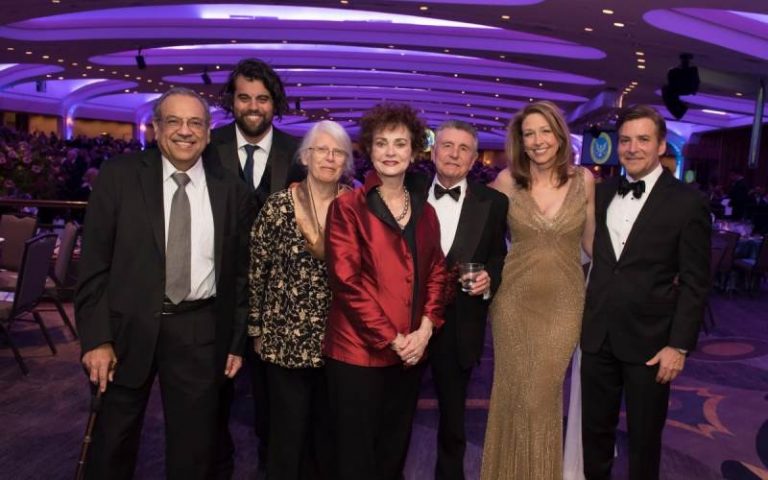Why Women Seem To Age Faster Than Men – A Detailed Guide
Aging is a natural process that affects everyone, but many people have observed that women seem to age faster than men. This notion often comes from societal observations, where women appear to show signs of aging—like wrinkles, graying hair, and skin changes—earlier than their male counterparts. While this may seem like a universal truth, the reality is more complex, involving a combination of biological, hormonal, genetic, and environmental factors.
In this article, we will explore the science behind why women may appear to age faster than men, uncovering the key factors that contribute to the aging process. We’ll discuss how genetics, hormones, lifestyle, and even societal expectations play a role in aging differently for women and men.
1. Biological Differences Between Men and Women
At the core of why women may age faster than men lies the biological differences between the sexes. These differences shape not only how we develop but also how we age over time.
- Genetics and Chromosomes: Women have two X chromosomes, while men have one X and one Y chromosome. This genetic difference can have significant implications for aging. Women have a “backup” X chromosome, which can potentially protect them against certain genetic disorders and may contribute to a more robust aging process. However, this double X chromosome system also means that women are more susceptible to autoimmune diseases, which can accelerate aging.
- Skin Composition: One of the most visible signs of aging is the condition of the skin. Women’s skin tends to be thinner, and they have fewer collagen fibers than men. Collagen is essential for maintaining skin elasticity and firmness, so women are more prone to developing wrinkles and fine lines at an earlier age compared to men, who generally have thicker skin and more collagen.
2. Hormonal Differences and Their Impact on Aging
Hormones play a huge role in the aging process, and this is particularly true for women. As women approach menopause, their bodies undergo significant hormonal changes that can affect both their physical and emotional well-being.
- Estrogen and Skin Health: Estrogen, a hormone that is abundant in women before menopause, is responsible for maintaining skin hydration and elasticity. When estrogen levels decline during menopause, women experience changes in their skin’s texture and firmness, leading to sagging, dryness, and an increase in wrinkles. Men, on the other hand, have a much slower and less dramatic decrease in testosterone, which tends to protect their skin from such drastic changes.
- Menopause and Its Effects: Menopause typically occurs between the ages of 45 and 55 and brings a sudden and sharp decline in estrogen levels. This hormonal drop accelerates the visible signs of aging, such as thinning hair, increased facial wrinkles, and dry skin. Men’s testosterone levels decrease more gradually with age, leading to a less sudden change in their physical appearance.
- Testosterone’s Protective Effects in Men: Testosterone helps men maintain muscle mass, skin thickness, and collagen production. This hormone, which decreases more slowly than estrogen in women, allows men to maintain more youthful physical characteristics for longer. The gradual decrease in testosterone results in less dramatic changes in physical appearance.
3. The Role of Lifestyle Choices
Lifestyle factors such as diet, exercise, sleep, and stress management play a major role in how we age, and these factors can affect men and women differently.
- Diet and Nutrition: Women are more likely to follow restrictive diets or engage in dieting behaviors that can negatively impact skin health and overall aging. In contrast, men often consume higher levels of protein, which may help maintain muscle mass and skin elasticity, contributing to a more youthful appearance. Poor eating habits, such as high sugar intake, can lead to accelerated aging, but women tend to experience this more due to hormonal fluctuations that impact their metabolism.
- Exercise and Muscle Mass: As we age, we lose muscle mass, a process known as sarcopenia. However, men tend to retain muscle mass better than women due to higher levels of testosterone, which supports muscle growth and maintenance. Women, especially as they age and enter menopause, may experience greater muscle loss, which can contribute to the appearance of frailty and the overall perception of aging.
- Stress and Cortisol: Chronic stress and high cortisol levels are known to accelerate the aging process. Women often report higher levels of stress due to both societal expectations and hormonal fluctuations, particularly during the premenstrual and menopausal stages. Elevated cortisol can lead to premature aging signs like wrinkles, skin sagging, and reduced elasticity. Men tend to have fewer fluctuations in their stress hormone levels, which might explain why they appear to age more gradually.
4. Genetics and Longevity
Genetics also play a significant role in how we age, and research shows that women tend to live longer than men, on average. However, while women may live longer, they often experience more years of poor health or conditions that are related to the aging process, like osteoporosis or arthritis.
- Longevity in Women: Women have a longer life expectancy, but this may come with an increased risk of age-related conditions, such as osteoporosis, heart disease, and Alzheimer’s disease. These conditions are more likely to affect women in their later years, which may contribute to the perception that women age “faster” than men, especially when considering overall quality of life during the aging process.
- Genetic Longevity and Aging Genes: The way our bodies age is influenced by longevity genes, which are responsible for the rate at which our cells regenerate and repair themselves. Some studies suggest that women have a genetic advantage when it comes to longevity, with female-specific genes that help protect against certain diseases. However, this longevity advantage does not always translate into fewer signs of aging, as women may experience more noticeable effects of aging in their later years.
5. Social Expectations and Aging Perception
The way society views aging in women and men plays a huge role in how we perceive the aging process. Cultural and media representations often associate youth with beauty, especially for women, which can lead to greater scrutiny of women’s physical appearance as they age.
- Media and Cultural Norms: Women are often under more societal pressure to maintain a youthful appearance, which can make the aging process more noticeable and more heavily emphasized. Wrinkles, graying hair, and other signs of aging are sometimes seen as negative qualities for women, whereas men may be celebrated for the same signs of aging, which may make their aging process seem less pronounced.
- Cosmetic Procedures: Women are more likely to undergo cosmetic procedures, such as Botox, fillers, or plastic surgery, to combat the visible signs of aging. Men, on the other hand, are less likely to opt for such procedures, which might create a perception that women are aging faster as they attempt to maintain a youthful appearance through these methods.
In conclusion, while it may seem that women age faster than men, the truth is far more complicated. Biological, hormonal, and lifestyle factors all contribute to the aging process in different ways. Women experience more dramatic hormonal shifts during menopause, which can lead to visible signs of aging such as wrinkles and dry skin. Additionally, women tend to have thinner skin, which makes the effects of aging more noticeable.
However, men are not immune to the aging process either; they may experience slower muscle loss, thicker skin, and a more gradual decrease in testosterone, but they also deal with other health issues related to aging. Social pressures, cultural norms, and the emphasis on youthful beauty in women also skew perceptions of how fast each gender ages.
Ultimately, aging is a complex process that is shaped by a variety of internal and external factors. By understanding the scientific, social, and biological reasons behind these differences, we can approach aging with a more balanced and informed perspective.



